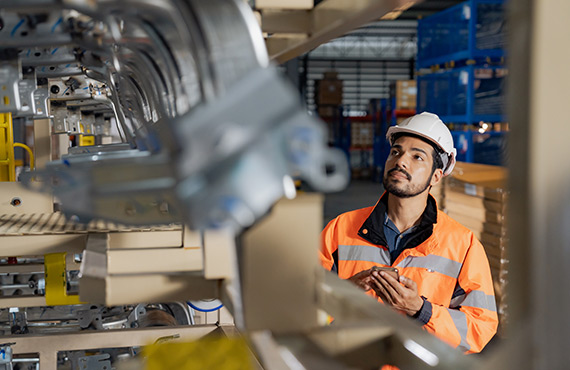
Consistency and adhering to regulations are crucial in industries. This includes pharmaceuticals, food and beverage, chemicals, and oil and gas.
Failure to meet these requirements can lead to product recalls and shutdowns. In the past, quality control involved manual inspections, testing, and paperwork. These processes were time-consuming and prone to errors.
This article dives into how smart automation solutions ensure safe and high-quality products.
Significance of Quality in Manufacturing
Quality control plays a crucial role in manufacturing industries. These include pharmaceuticals, food and beverage, chemicals, and medical devices.
Process industries, such as oil and gas, must install cybersecurity measures. This will protect their operational technology and industrial control systems. Digital transformation is increasing connectivity and cyber risks. Quality assurance procedures are essential. They audit cyber defenses across IT and OT environments.
Continuous monitoring of distributed control systems helps detect anomalies and cyber intrusions. This is quality control. Control methods use advanced algorithms to collect data from sensors. They can analyze for signs of manipulation or sabotage. Digitalization is changing how process industries operate.
Quality assurance is vital for cybersecurity in operational technology and industrial control systems. Rigorous testing and review ensure systems function as intended. Distributed control systems collect data to enable centralized monitoring. Control methods like access controls secure these systems.
Quality control checks that security measures are working. As digital transformation changes OT/ICS, quality practices enhance cybersecurity. With more connectivity and data, quality principles grow in importance. Regular audits and risk assessments boost resilience. Proactive quality management secures operational networks.
Clear policies and strong oversight aid cyber defense. Quality applies both to technology and processes. Detailed documentation and configuration control create consistency. Quality builds security into systems from the start.
As a result, cybersecurity must be a priority. It safeguards critical infrastructure against sophisticated threats.
This is of utmost significance due to the following reasons:
- Product Safety: The presence of defective products can pose a threat to consumers. It's crucial to conduct rigorous quality testing.
- Consistency: Customers expect each unit produced to have the same features and performance. Any deviations from this standard can undermine trust in the brand.
- Industries must adhere to strict quality standards and procedures when they are regulated. This is necessary to comply. Failure to comply can lead to hefty fines or the loss of operating licenses.
- Detecting defects early on helps prevent waste. It also avoids the need for extra costs. This includes costs associated with reworking or discarding faulty products.
- Customer Satisfaction: Delivering high-quality goods is key to keeping customers satisfied. It also keeps them loyal to the brand.
Excellent product quality is a rule for safety, consistency, compliance, and efficiency. It is also crucial for customer satisfaction.
Regulations and Compliance
In regulated industries like pharmaceuticals, biotechnology, and food, manufacturing facilities must meet strict quality standards and compliance regulations. Failure to meet these requirements can have serious consequences. These include the potential for unsafe or ineffective products. They can result in recalls, damage to reputation, and even loss of life.
For example, pharmaceutical companies must follow regulations such as Good Manufacturing Practices (GMP). This involves meticulous control and documentation of all processes.
This includes the following:
- Equipment calibration
- Personnel training
- Test method validation
- Batch documentation,
- Stability testing
- Sample retention.
The U.S. Food and Drug Administration (FDA) establishes regulations for food manufacturing. The FDA sets standards like the Food Safety Modernization Act (FSMA). Accordingly, it's important to install comprehensive food safety systems. They should cover hazard analysis, preventive controls, and sanitation practices. They should also include supply chain oversight and preparedness for recalls.
Risks of Facilitating Manual Processes
- It's risky to rely on manual processes and human operators for quality control testing and regulatory compliance. Human error is inevitable. It leads to inaccurate test results. It also causes compliance problems and potential inconsistencies in product quality.
- Manual testing processes lack standardization among operators. This makes it challenging to achieve consistent and reliable results.
- Manual testing lacks traceability and auditing. As a result, reporting and compliance are burdensome. It becomes difficult to track who performed tasks, when they were done, and how they were executed.
These issues can have serious consequences. Failure to maintain strict quality standards in regulated industries can jeopardize consumer safety. It can also result in severe regulatory noncompliance.
Benefits of Automation
Automating manufacturing processes with process control solutions offers many advantages.
- Automated systems execute repetitive tasks with unwavering precision. They cut variations and errors. This guarantees that each product meets specifications without fail.
- Accuracy - Get precise and accurate measurements and data collection when you automate.
- Efficiency - Automated systems can operate at optimal levels 24/7 without fatigue. This boosts throughput and productivity. Automating repetitive or hazardous tasks also enhances worker safety.
- Compliance - Automated systems generate detailed records that document correct procedure adherence.
You can cut inconsistencies and cut errors by harnessing process automation. You can also improve quality control and ensure consistent compliance with regulations.

Process Control Systems
Advanced technologies oversee and manage industrial processes in process control systems. These systems enable manufacturers to track crucial parameters. They also help maintain processes within specified limits.
In addition, they automate necessary actions or adjustments. By utilizing process control systems, you can enhance quality, safety, compliance, and efficiency.
PLCs
Programmable Logic Controllers (PLCs) are specialized industrial computers. Within a factory setting, they automate various processes. These PLCs establish connections with a wide range of field devices. These devices include sensors, instruments, valves, and motors. PLCs execute programs written in ladder logic. They can control outputs based on input conditions.
PLCs alsooffer automation and sequencing capabilities. They provide safety logic and data collection functionalities. PLCs have a key advantage: Users can reprogram and change them without rewiring.
Automation Quality Testing
Automated quality testing provides manufacturers with immediate and proactive insights. It helps to identify any deviations from specifications. Manufacturers can track crucial parameters like temperature, pressure, viscosity, and color. They can do this by implementing automated inspection systems. This enables them to detect if a process is straying from an acceptable range.
Automating sampling and lab testing eliminates manual errors. It delivers rapid results for checking chemical composition, microbiology, and other product specifications. Moreover, it does this. By incorporating inline sensors and imaging systems, automatic visual inspection becomes possible. Machine vision systems can detect defects and anomalies much faster than human operators.
Additionally, constant feedback loops enable automated systems to halt production or make adjustments. If a test fails, they can step in. This prevents the production of large quantities of defective products.

Key Takeaways
Manual processes are prone to human error. They also make it challenging to enforce strict standards.
You can enjoy several advantages by implementing advanced process control systems.
For example, you can use automated quality testing to do the following:
- Reduce the risks of defects, contamination, and deviations.
- Provides real-time monitoring and alerts when parameters go beyond specifications.
- Enables automatic corrections to maintain operations within optimal ranges.
- Generates comprehensive documentation for compliance reporting.
- Increases efficiency and productivity by minimizing downtime.
- Optimizes asset use and minimizes waste.
To ensure the highest quality and compliance standards, partner with a trusted provider like Proconex. We provide automated process control solutions. Understanding your operations and requirements is key to a successful project.
Our experienced team is ready to collaborate with you today.
